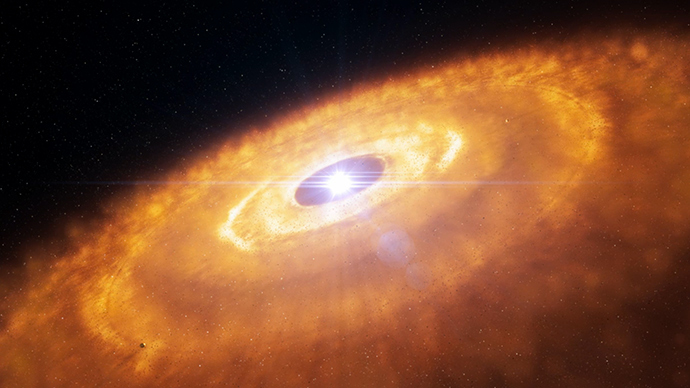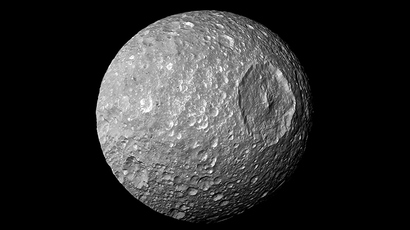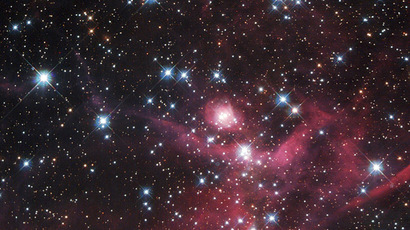'Revolutionary' planet formation around star captured by astronomers (PHOTOS, VIDEO)

To the Greeks, planets were wandering stars rightly named after the pantheon of gods. Now, scientists have captured amazingly clear images showing the birth of these amazing heavenly bodies around a star some 450 light years away.
The stellar new image was made possible by the Atacama Large Millimeter/sub-millimeter Array (ALMA) in Chile.
Surrounded by clearly defined concentric circles of dust and gas, the young star HL Tau stands at the center of a massive, rotating, protoplanetary band.

The dense cloud in which the embryonic planets are born blocked out visible light, complicating efforts to get a clear view of the planets forming in the accretion disk. With the aid of ALMA, however, a clarity previously unknown in human history was provided for the first time.
The most expensive ground-based telescope in operation, ALMA was first set up to explore the origins of the universe. Its towering 39-foot-tall radio telescopes serve as the perfect tools to make detailed images of a (relatively) nearby star and planet formation.
By using wavelengths much longer than visible light, ALMA was able to capture images of the massive cloud surrounding HL Tau.
“These features are almost certainly the result of young planet-like bodies that are being formed in the disc. This is surprising since such young stars are not expected to have large planetary bodies capable of producing the structures we see in this image," said Stuartt Corder, ALMA deputy director.
The scientists were particularly surprised by the clarity of detail in the image; the sharpest picture ever made at sub-millimeter wavelengths.
The image provides a “revolutionary” resolution’ just five times the distance from the Sun to the Earth; better than what is routinely achieved with the NASA/ESA Hubble Space Telescope.

“HL Tauri is no more than a million years old, yet already its disc appears to be full of forming planets. This one image alone will revolutionize theories of planet formation," said Catherine Vlahakis, ALMA deputy program scientist and lead program scientist for the ALMA Long Baseline Campaign.
Amazingly, while HL Tau is much smaller than our own sun, the dust cloud is far wider than our own solar system.
But despite its diminutive size, the distance from HL Tau to the edge of the disc is 2.8 billion miles – three times that of our sun to Neptune. The star has long been the subject of scientific inquiry. Previously, researchers had witnessed one burgeoning planet in orbit around the star, though they were unable to directly observe its formation.

Eventually, these rotating rings will form all sorts of heavenly bodies, from asteroids and comets to planets. With time, as the star evolves and settles, the newly-born solar system will, in some small way, start to look a bit more like our own corner of the Milky Way.















